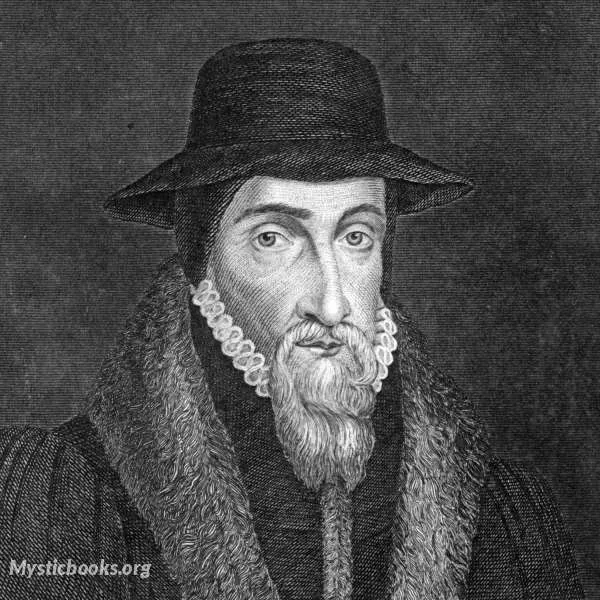
Timeline
Title
Country/Nationality
John Foxe
John Foxe an English historian and martyrologist, was the author of Actes and Monuments (otherwise Foxe's Book of Martyrs), telling of Christian martyrs throughout Western history, but particularly the sufferings of English Protestants and proto-Protestants from the 14th century and in the reign of Mary I. The book was widely owned and read by English Puritans and helped to mould British opinion on the Catholic Church for several centuries.
Foxe was born in Boston, in Lincolnshire, England, of a middlingly prominent family and seems to have been an unusually studious and devout child. In about 1534, when he was about 16, he entered Brasenose College, Oxford, where he was the pupil of John Hawarden (or Harding), a fellow of the college. In 1535 Foxe was admitted to Magdalen College School, where he may either have been improving his Latin or acting as a junior instructor. He became a probationer fellow in July 1538 and a full fellow the following July.
By the time he was twenty-five, he had read the Latin and Greek fathers, the schoolmen, the canon law, and had "acquired no mean skill in the Hebrew language."
Foxe resigned from his college in 1545 after becoming a Protestant and thereby subscribing to beliefs condemned by the Church of England under Henry VIII. After a year of "obligatory regency" (public lecturing), Foxe would have been obliged to take holy orders by Michaelmas 1545, and the primary reason for his resignation was probably his opposition to clerical celibacy, which he described in letters to friends as self-castration. Foxe may have been forced from the college in a general purge of its Protestant members although college records state that he resigned of his own accord and "ex honesta causa". Foxe's change of religious opinion may have temporarily broken his relationship with his stepfather and even have put his life in danger. Foxe personally witnessed the burning of William Cowbridge in September 1538.
Foxe's prospects, and those of the Protestant cause generally, improved after the accession of Edward VI in January 1547 and the formation of a Privy Council dominated by pro-reform Protestants. In the middle of or at the end of 1547, Foxe moved to London and probably lived in Stepney. There he completed three translations of Protestant sermons published by the "stout Protestant" Hugh Singleton. During this period Foxe also found a patron in Mary Fitzroy, Duchess of Richmond, who hired him as tutor to the orphan children of her brother, Henry Howard, Earl of Surrey, a Catholic who had been executed for treason in January 1547. (The children were Thomas, who would become the fourth duke of Norfolk and a valuable friend of Foxe; Jane, later Countess of Westmorland; Henry, later earl of Northampton; and their cousin Charles, who would later command the English fleet against the Spanish Armada.) Foxe lived in the Duchess's London household at Mountjoy House and later at Reigate Castle, and her patronage "facilitated Foxe's entry into the ranks of England's Protestant elite." During his stay at Reigate, Foxe helped suppress a cult that had arisen around the shrine of the Virgin Mary at Ouldsworth, which had been credited with miraculous healing powers.
When Foxe received reports from England about the ongoing religious persecution there, he wrote a pamphlet urging the English nobility to use their influence with the queen to halt it. Foxe feared that the appeal would be useless, and his fears proved correct. When Knox attacked Mary Stuart in his now famous The First Blast of the Trumpet Against the Monstrous Regiment of Women, Foxe apparently criticized Knox's "rude vehemency" although their friendship seems to have remained unimpaired.
After the death of Mary I in 1558, Foxe was in no hurry to return home, and he waited to see if religious changes instituted by her successor, Elizabeth I, would take root. Foxe was also so poor that he was unable to travel with his family until money was sent to him. Back in England, he seems to have lived for ten years at Aldgate, London, in the house of his former pupil, Thomas Howard, now Fourth Duke of Norfolk.[29] Foxe quickly became associated with John Day the printer and published works of religious controversy while working on a new martyrology that would eventually become the Actes and Monuments.
Foxe was ordained a priest by his friend Edmund Grindal, now Bishop of London, but he "was something of a puritan, and like many of the exiles, had scruples about wearing the clerical vestments laid down in the queen's injunctions of 1559." Many of his friends eventually conformed, but Foxe was "more stubborn or single-minded." Some tried to find him preferments in the new regime, but it "was not easy to help a man of so singularly unworldly a nature, who scorned to use his powerful friendships to advance himself."
Foxe died on 18 April 1587 and was buried at St. Giles's, Cripplegate. His widow, Agnes, probably died in 1605. Foxe's son, Samuel Foxe (1560–1630) prospered after his father's death and "accumulated a substantial estate." Fortunately for posterity, he also preserved his father's manuscripts, and they are now in the British Library.
Books by John Foxe
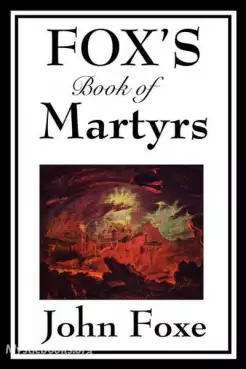
Foxe's Book of Martyrs, Volume 1
The Actes and Monuments, popularly known as Foxe's Book of Martyrs, is a work of Protestant history and martyrology by Protestant English historian John Foxe, first published in 1563 by John Day. It includes a polemical account of the sufferings of P...
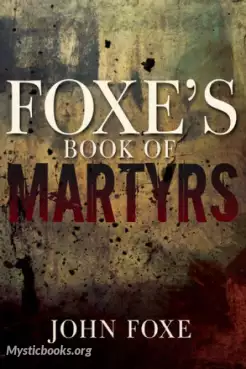
Foxe's Book of Martyrs, Volume 2
It begins with early Christian martyrs, and continues with the Inquisition, Wycliffe, and the Marian Persecutions.Roman Catholics often view Foxe's record of this period as extremely partisan and the primary propaganda piece for English anti-Catholi...
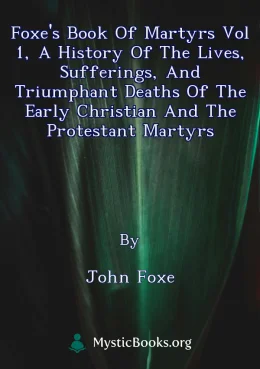
Foxe's Book of Martyrs Vol 1, A History of the Lives, Sufferings, and Triumphant Deaths of the Early Christian and the Protestant Martyrs
The Book of Martyrs, by John Foxe, is an English Protestant account of the persecutions of Protestants, many of whom had died for their beliefs within the decade immediately preceding its first publication. It was first published by John Day, in 1563...
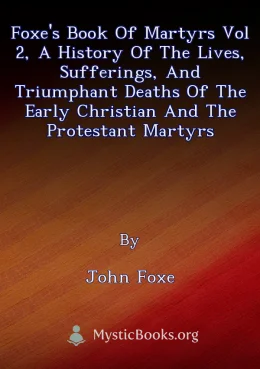
Foxe's Book of Martyrs Vol 2, A History of the Lives, Sufferings, and Triumphant Deaths of the Early Christian and the Protestant Martyrs
Foxe's Book of Martyrs is a monumental work of English Protestant history, documenting the persecutions and martyrdoms of early Christians and Protestants. Originally published in 1563, it remains a significant witness to the struggles and endurance...